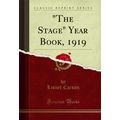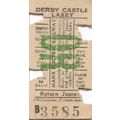Amsterdam, Netherlands - Anne Frank Huis, Prinsengracht - postcard c.1970s
- Condition : Used
- Dispatch : 2 Days
- Brand : None
- ID# : 117280126
- Quantity : 1 item
- Views : 343
- Location : United Kingdom

- Seller : justthebook (+1703)
- Barcode : None
- Start : Thu 29 Aug 2013 19:35:30 (EDT)
- Close : Run Until Sold
- Remain : Run Until Sold
Checks/Cheques
 for 1 item(s) edit
for 1 item(s) edit
Shipping Calculator
More Listings from This Seller view all
Seller's Description
- Postcard
- Picture / Image: Anne Frank Huis, Prinsengracht 263, Amsterdam, Netherlands - front of the house
- Publisher: Van Leer's
- Postally used: no
- Stamp: n/a
- Postmark(s): n/a
- Sent to: n/a
- Notes / condition:
Please ask if you need any other information and I will do the best I can to answer.
Image may be low res for illustrative purposes - if you need a higher definition image then please contact me and I may be able to send one.
------------------------------------------------
Postage & Packing:
UK (incl. IOM, CI & BFPO): 99p
Europe: £1.60
Rest of world (inc. USA etc): £2.75
No additional charges for more than one postcard. You can buy as many postcards from me as you like and you will just pay the fee above once. (If buying postcards with other things such as books, please contact or wait for invoice before paying).
Payment Methods:
UK - PayPal, Cheque (from UK bank) or postal order
Outside UK: PayPal ONLY (unless otherwise stated) please. NO non-UK currency checks or money orders (sorry).
NOTE: All postcards are sent in brand new stiffened envelopes which I have bought for the task. These are specially made to protect postcards and you may be able to re-use them. In addition there are other costs to sending so the above charge is not just for the stamp!
I will give a full refund if you are not fully satisfied with the postcard.
----------------------------------------------
Text from the free encyclopedia WIKIPEDIA may appear below to give a little background information (internal links may not work) :
*************
The Anne Frank House located on the Prinsengracht canal in Amsterdam, the Netherlands, is a museum dedicated to Jewish wartime diarist Anne Frank, who hid from Nazi persecution with her family and four other people in hidden rooms at the rear of the building. As well as the preservation of the hiding place — known in Dutch as the Achterhuis — and an exhibition on the life and times of Anne Frank, the museum acts as an exhibition space to highlight all forms of persecution and discrimination.
It opened on 3 May 1960 with the aid of public subscription, three years after a foundation was established to protect the property from developers who wanted to demolish the block.
The house — and the one next door at number 265, which was later purchased by the museum — was built by Dirk van Delft in 1635.[4] The canal-side facade dates from a renovation of 1740[5] when the rear annex was demolished. It was originally a private residence, then a warehouse, and in the nineteenth century, the front warehouse with its wide stable-like doors was used to house horses. At the start of the 20th century a manufacturer of household appliances occupied the building, succeeded in 1930 by a producer of piano rolls, who vacated the property by 1939. On 1 December 1940 Anne's father Otto Frank moved the offices of the spice and gelling companies he worked for, Opekta and Pectacon, from an address on Singel canal to Prinsengracht 263.
The ground floor consisted of three sections; the front was the goods and dispatch entrance, behind it in the middle section were the spice mills, and at the rear, which was the ground floor of the annex, was the warehouse where the goods were packed for distribution. On the first floor above were the offices of Frank's employees; Miep Gies, Bep Voskuijl and Johannes Kleiman in the front office; Victor Kugler in the middle; with Otto Frank in the rear office above the warehouse and below the floors which would later hide him and his family for two years until their betrayal to the Nazi authorities.
The Achterhuis (Dutch for ""back house"") or Secret Annex — as it was called in The Diary of a Young Girl, an English translation of the diary — is the rear extension of the building. It was concealed from view by houses on all four sides of a quadrangle. Its secluded position made it an ideal hiding place for Otto Frank, his wife Edith, two daughters (of whom Anne was the younger), and four other Jewish people seeking refuge from Nazi persecution. Though the total amount of floor space in the inhabited rooms came to only about 500 square feet (46 m2),[citation needed] Anne Frank wrote in her diary that it was relatively luxurious compared to other hiding places they had heard about. They remained hidden here for two years and one month until they were anonymously betrayed to the Nazi authorities, arrested, and deported to their deaths in concentration camps. Of the hidden group, only Otto Frank survived the war.
After those in hiding were arrested, the hiding place was cleared by order of the arresting officers and all the remaining contents (clothes, furniture, and personal belongings) of the Frank family and their friends were seized and distributed to bombed-out families in Germany. Before the building was cleared, Miep Gies and Bep Voskuijl, who had helped hide the families, returned to the hiding place against the orders of the Dutch police and rescued some personal effects. Amongst the items they retrieved was The Diary of Anne Frank.
After Otto Frank returned to Amsterdam, he was given Anne's diaries and papers, and subsequently compiled selections into a book published in Dutch in 1947 under the title Het Achterhuis, which Anne had chosen as the name of a future memoir or novel based on her experiences in hiding. Achterhuis is a Dutch architectural term referring to a Back-house (used comparatively with Voorhuis meaning Front-house), however when the English translation began production it was realised that many English-speaking readers might not be familiar with the term, and it was decided that a more evocative term (the 'Secret Annexe') would better convey the building's hidden position.
Shortly after the book was published, visitors were shown around by the employees who had hidden the families and could see the secret rooms. But by 1955 the company had moved to new premises and the entire block to which the building belonged was sold to a single estate agent who served a demolition order with the intention of building a factory on the space. A campaign to save the building and to list it as a protected monument was started by the Dutch paper Het Vrije Volk on 23 November 1955. The building was saved by campaigners who staged a protest outside the building on the day of demolition. The Anne Frank Foundation was set up by Otto Frank and Johannes Kleiman on 3 May 1957 with the primary aim of collecting enough funds to purchase and restore the building. In October of that year the company who owned it donated the building to the Foundation as a goodwill gesture. The collected funds were then used to purchase the house next door, Number 265, shortly before the remaining buildings on the block were pulled down as planned. The building was opened as a museum to the public in 1960.
The former hiding place of Anne Frank attracted a huge amount of interest, especially as translations and dramatisations of the Diary had made her a figure known throughout the world. Over 9,000 visitors came in its first year. In a decade there were twice as many. Over the years the building has had to be renovated to manage such a large number of visitors, and so it closed temporarily in 1970 and in 1999.
On 28 September 1999 Queen Beatrix of the Netherlands reopened the museum, which now incorporated the entire building between exhibition spaces, a bookshop, and a cafe, and featured the offices in the front house reconstructed to their state in the 1940s. In 2007, over one million people visited the museum.
On display at the museum is the Academy Award that Shelley Winters won, and later donated to the museum, for her performance as Auguste van Pels in The Diary of Anne Frank. The award now sits in a bullet-proof glass case in the museum.
In 1998 the Anne Frank Zentrum in Berlin was opened, after the completion of a cooperation agreement with the Anne Frank House
type=printed postcards
theme=topographical: rest of the world
sub-theme=europe
county/ country=netherlands
number of items=single
period=1945 - present
postage condition=unposted
Listing Information
| Listing Type | Gallery Listing |
| Listing ID# | 117280126 |
| Start Time | Thu 29 Aug 2013 19:35:30 (EDT) |
| Close Time | Run Until Sold |
| Starting Bid | Fixed Price (no bidding) |
| Item Condition | Used |
| Bids | 0 |
| Views | 343 |
| Dispatch Time | 2 Days |
| Quantity | 1 |
| Location | United Kingdom |
| Auto Extend | No |




















